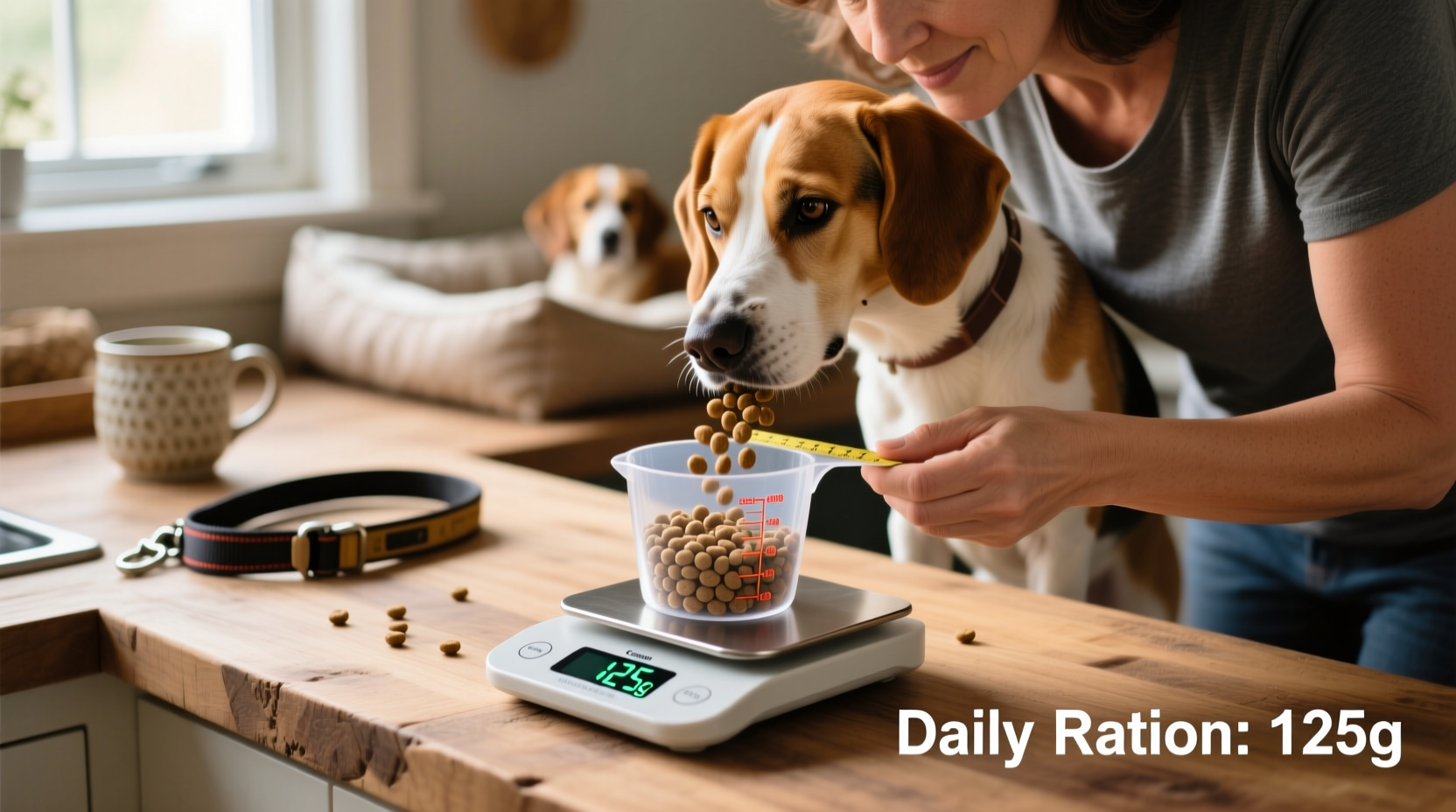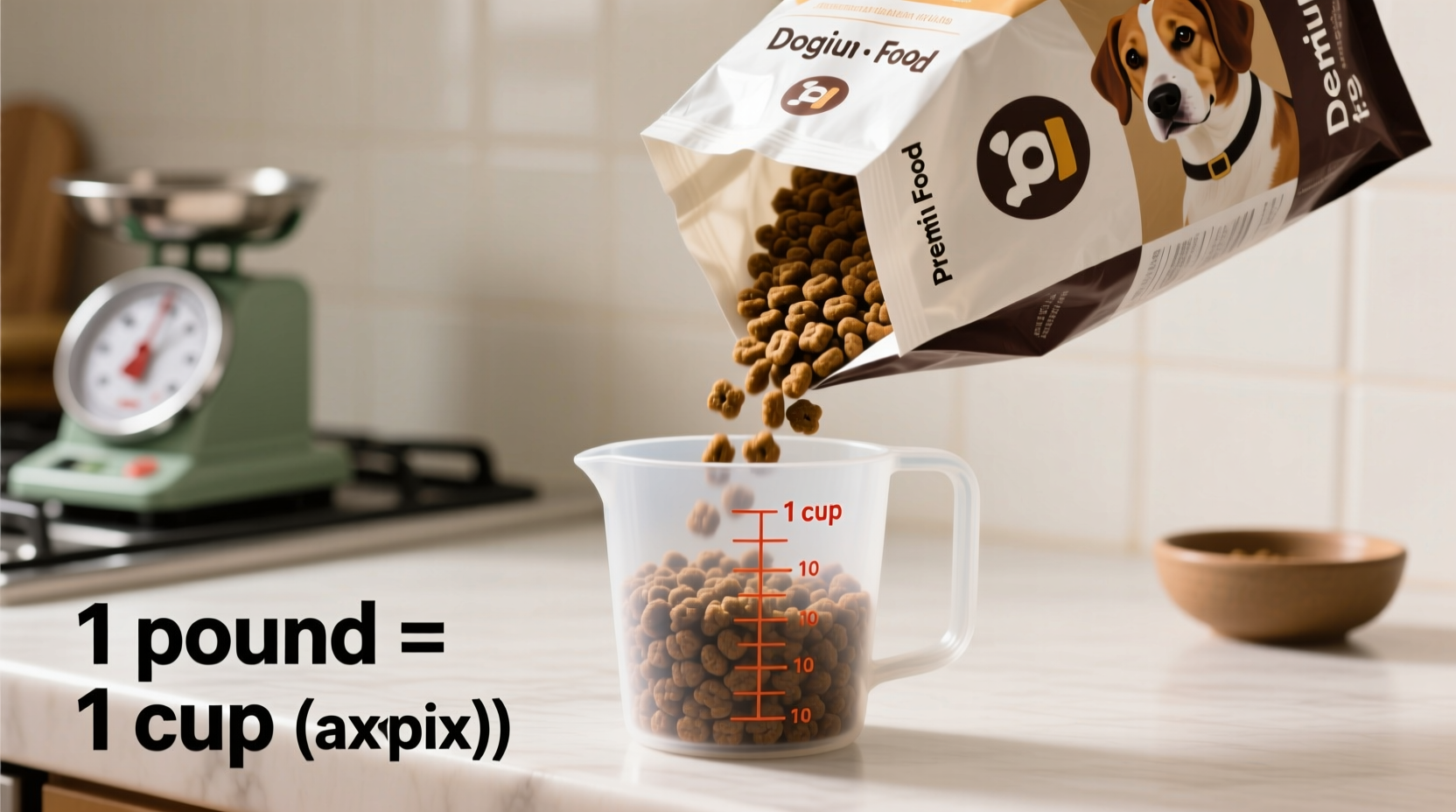Getting dog food measurements right matters more than you might think. An incorrect cup-to-pound conversion can lead to overfeeding or underfeeding, impacting your dog's health and longevity. This guide delivers the precise information you need to measure portions accurately, with evidence-based recommendations you can trust.
Why There's No Single Answer to This Common Question
The "how many cups of dog food in a pound" question seems straightforward, but the reality is more complex. Unlike water (where 16 ounces always equals 2 cups), dog food density varies dramatically between brands and formulas. This variation stems from several key factors:
- Kibble density: Premium foods with more meat content tend to be denser than grain-heavy options
- Shape and size: Large breed formulas often have bigger, lighter kibble pieces
- Moisture content: Even "dry" foods range from 6-10% moisture
- Air content: Some manufacturing processes create more air pockets in kibble
According to the Association of American Feed Control Officials, these variations mean measuring by weight rather than volume is the only reliable method for proper portion control.
The Practical Measurement Method Every Dog Owner Should Use
Forget searching for a universal conversion chart. Here's the veterinarian-recommended approach to determine exactly how many cups of your dog food equal one pound:
- Place an empty food bowl on a digital kitchen scale and tare/zero it
- Add one cup of your dog's food using a standard dry measuring cup
- Note the weight displayed (typically 3.5-5.5 ounces per cup)
- Divide 16 (ounces in a pound) by this number to get cups per pound
This simple process takes less than two minutes but ensures you're feeding accurately. The American Kennel Club emphasizes that using volume measurements without knowing your specific food's density can result in up to 15% portion variation—enough to cause weight issues over time.

Dog Food Density Reference Guide
While your specific brand should always be measured, these reference points help establish reasonable expectations:
| Dog Food Type | Average Ounces Per Cup | Cups Per Pound | Common Brands |
|---|---|---|---|
| Small Breed Formula | 3.5-4.0 oz | 4.0-4.5 cups | Royal Canin, Hill's Science Diet |
| Standard Adult Formula | 4.0-4.5 oz | 3.5-4.0 cups | Purina Pro Plan, Iams |
| Large Breed Formula | 3.0-3.5 oz | 4.5-5.3 cups | Eukanuba, Nutro |
| High-Protein Formula | 4.5-5.5 oz | 2.9-3.5 cups | Blue Buffalo Wilderness, Taste of the Wild |
When Cup-to-Pound Conversions Really Matter
Accurate measurements become critical in several scenarios:
- Puppy growth stages: The Veterinary Information Network notes that improper portioning during growth can cause developmental issues
- Weight management: A 2023 study in the Journal of Veterinary Nutrition found 68% of portion mismeasurement cases contributed to canine obesity
- Medicated diets: Precise measurement is essential when food contains therapeutic ingredients
- Multi-dog households: Ensuring each dog receives their prescribed amount
Professional Feeding Recommendations
Veterinary nutritionists recommend these best practices for portion control:
- Always use an 8-ounce dry measuring cup, not liquid measuring cups
- Level off each cup—don't heap kibble
- Measure at the same time each day (kibble density can change with humidity)
- Recheck your cup-to-pound ratio quarterly as formulas may change
- Consult your vet before making significant portion adjustments
Remember that feeding guidelines on packaging represent starting points only. Individual dogs' needs vary based on age, activity level, metabolism, and health conditions. The World Small Animal Veterinary Association emphasizes that regular weight monitoring—not just cup measurements—should guide feeding decisions.











 浙公网安备
33010002000092号
浙公网安备
33010002000092号 浙B2-20120091-4
浙B2-20120091-4